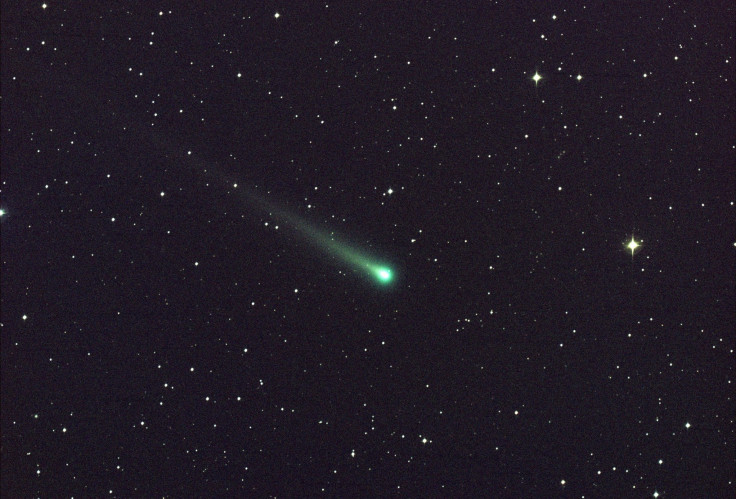Comet ISON’s Thanksgiving Encounter With The Sun: Where To Watch The Sun-Grazing Comet

As Comet ISON makes its way rapidly toward the sun, astronomers are anxious to find out whether the space projectile will disintegrate from the sun’s intense heat and gravity, or if it will manage to slingshot around the star on Thursday.
Many observatories across the U.S. are preparing to catch a glimpse of the comet and show it to the public through telescopes, hoping that it will survive its Thanksgiving Day encounter with the solar system’s center-star. Meanwhile, a report from LiveScience said any place with a dark sky and a low horizon would be good to watch the comet.
“The best locations to view Comet ISON would be any place dark, away from artificial lights, with clear sky, lower humidity and a low eastern horizon, with no trees, buildings or mountains in the way,” Zolt Levay of the Space Telescope Science Institute in Baltimore, Md., told LiveScience, in an email. “The best places would likely be in the Southwest, at higher elevations. There it's more likely to be clear, the air is drier (less haze), and it's easier to get away from city lights and find an elevated location.”
According to Levay, the Comet ISON can also be viewed from beaches on the Atlantic Coast, although such locations could have more haze than a higher, desert location. In addition, the Great Basin National Park in Nevada and the Bryce Canyon National Park in Utah can also be good places to witness the comet from.
For those who prefer using a telescope, there are a number of observatories that will serve the purpose. For instance, the Appalachian State University Dark Sky Observatory, located 5.6 miles east of Deep Gap, N.C., the Harvard-Smithsonian Center for Astrophysics Observatory in Cambridge, Mass., and the Griffith Observatory in Los Angeles will arrange viewings, LiveScience reported.
According to astronomers, the Comet ISON is rapidly brightening as its approaches the sun, making it easily visible to the naked eye under a dark sky. Some observers also believe that the comet will brighten so much that it will be visible even in a daytime sky when it will reach perihelion, which will be its closest approach to the sun, the Huffington Post reported.
If it survives the encounter, ISON is expected to reemerge two or three days later on the other side. After the weekend, the comet is likely to be back in the morning sky and would be seen slowly moving away from the Sun, never to return.
Meanwhile, NASA’s STEREO-A spacecraft has captured a video of the Comet ISON moving toward the sun. The STEREO-A is one of several sun-watching space observatories tracking ISON’s close encounter with the sun.
“This movie from the spacecraft's Heliospheric Imager shows Comet ISON, Mercury, Comet Encke andEarth over a five-day period from Nov. 20 to Nov. 25, 2013. The sun sits right of the field of view of this camera,” NASA wrote in a video description.
The space agency has announced that it will host a Google+ Hangout discussion from 1 p.m. to 3:30 p.m. EST on Thursday to discuss the comet’s journey through the solar system, and what the public worldwide may see in coming days as the comet attempts to approach the sun on Thanksgiving Day.
The Hangout will be broadcast publicly on the NASA Goddard Space Flight Center's YouTube and Google+ pages. The Hangout also will be carried live on NASA Television and the agency's website. For more information, click here.
ISON, which will pass within 684,000 miles of the sun, may contain the same fundamental building blocks that led to the formation of life on Earth about 3.5 billion years ago, according to NASA.
Here is an infographic from Space.com that explains the sun-grazing comet:
Source SPACE.com
© Copyright IBTimes 2024. All rights reserved.






















